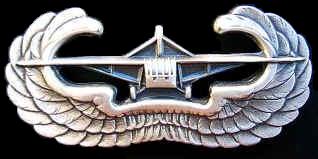|
|
. 224th mED. cO. Airborne Medical
Company |
|
The 224th Airborne Medical Company was activated at Camp Mackall, NC on 15 April 1943 under the command of Major James J Kenny. The company was assigned as an organic part of the 17th Airborne Division. It completed his basic training and followed the specific Gliders training. The training that finished with the Tennessee maneuvers where the troops discovered the winter combat condition.
Then, the 224th Airborne Medical Company accompanied the 17th Airborne at Camp Forrest before boarding on 17 August 1944, aboard the USS Wakefield from Camp Miles Standish, Boston.
The ship arrived at Liverpool, England on 26 August 1944.
August 30, 1944, when the division moved to Camp Chiseldon near Swindon in Wiltshire, the Company moved to Manton Downs near Marlborough.
![]() Belgium – Winter 1944/45 –
Battle of the Bulge
Belgium – Winter 1944/45 –
Battle of the Bulge
On December 16, 1944, the Germans launched an offensive through the Belgium Ardennes surprising the Allied Forces. The 17th Airborne remained in England. The 82nd and the 101st Airborne was at rest to Sisson, France were sent by trucks rushed to contain the German advance.
The division was placed on alert dated December 19, 1944 and sent to France between 23 and 24 December 1944. The 224th arrived at Mourmelon. On December 28, the unit was in Charleville.
At the beginning
of January 1945, the
224th Airborne
Medical Company was
moving with the 17th Airborne
Division to Belgium.
The unit set up to Neufchateau where it
requisitioned civilian hospital while one Collecting Platoon moved to
Jodenville to establish a
Collecting Point. After the 17th Airborne
Division, the 224th Airborne Medical Company left
Neuchateau on January 4 and ended 24 days later in Wiltz, Luxemburg
on 28 January 1945. On January 27, the 224th Med. Co.
was relieved by the 87th Infantry Division. From 29 January to
6 February 1945, the Company was held in reserve.
In early February, the 224th Airborne Medical Company received orders to move to Chalons-sur-Marne to prepare for the biggest airborne operation of WWII under the planification of Lt Colonel Edward Sigerfoos, Division surgeon. The beginning of the move began February 7, 1945, but the main part of the company left Wiltz, Luxemburg on 10 February to 12 February 1945 in Chalons, France.
![]() Germany – March 1945 – Operation Varsity
Germany – March 1945 – Operation Varsity
For the Operation Varsity, the 224th Airborne Medical Company which had 28 officers and 216 enlisted men was organised in three echelons. An Air Echelon, an Overland Echelon, an Rear Echelon.
The Air Echelon was transported by 53 Glider CG-4A and included 30 officers and 207 enlisted men. It also included 26 jeeps and 25 trailers for equipment.
- The Overland Echelon consisted of 1 officer and 30 enlisted men taking 10 trucks 2 ½ ton, 12 ambulances, 7 jeeps and 3 trailers.
- The Rear Echelon consisted of 2 officers and 9 enlisted men taking 2 ambulances.
In addition, each regiment was accompanied by an officer and 3 enlisted men, 3 officers and 2 enlisted men were attached to the General Headquarter. The 224th Airborne Medical Company stayed at Chalons-sur-Marne until 21 March 1945. Then, moved to the marshalling area prior to Varsity.
D-Day, the 53 gliders carrying the 224th Airborne Medical Company take off from Chartre, France at 9:15 am and landed on the LZ N at 12:25. The men settled immediately an Clearing Station under enemy fire.
During the
first 24 hours, the men treated no less than 394 men, including 117 serious
injuries. Losses 224th Airborne Medical Company were quite heavy: 3
officers and 13 men were killed in battle. During the first hours of the
assault, the 224th Airborne Medical Company will be supplemented by a captured
German medical unit that will take care of enemy wounded soldiers.
Material losses will amount to two jeeps and four trailers containing food,
tents and medical supplies. The Overland Echelon arrived March 25, 1945 but the
evacuation of wounded did not begin until later because the Marshal
Montgomery needed bridges to cross the Rhine river. Then the
evacuation station moved to the vicinity of Peddenburg, Germany.
Then the 224th Airborne Medical Company followed the division, it left
the area of Wesel in March 27, 1945.
March 28, 1945 at the end of the day, it moved to an aid station at Alt-Schrembeck.
March 29, 1945 is in Haltern. Two days later, it was installed east of
Dulmen. April 4, 1945, the aid station was installed in Muenster.
During this period, the company is always in movement, the wounded of the
division were supported by the evacuation station of the 79th Infantry
Division.
The 224th Airborne Medical Company left Muenster April 7, 1945 in
Oberhausen it reached April 11, 1945.
Between 22 and 30 April 1945, due to the low number of injuries, the company
worked with one platoon. Most of the time the company took care of prisoners of
war and civilians.
During this same period, the 224th Airborne Medical Company took care of
the training of soldiers by teaching them medical aid.
The 224th Airborne Medical Company left Oberhausen June 11, 1945
in Vittel, France. On 1 July 1945, the company commander, Major
James J Kenny was transferred to the 82nd Airborne and was replaced by
Major Jerry J Belden, who commanded the 307th Airborne Medical Company.
The first platoon was transferred to the 13th Airborne Division in July
5, 1945. On 30 August 1945, the company left Vittel for St Victoret
near Marseille in southern France.
Then the 224th Airborne Medical Company left Europe to return to the
United States. It landed 15 September 1945 and settled September 15, 1945 at
Camp Myles Standish, Massachusetts.
Finally, the 224th Airborne Medical Company was deactivated October 22,
1945 at Camp Mackall, North Carolina.


